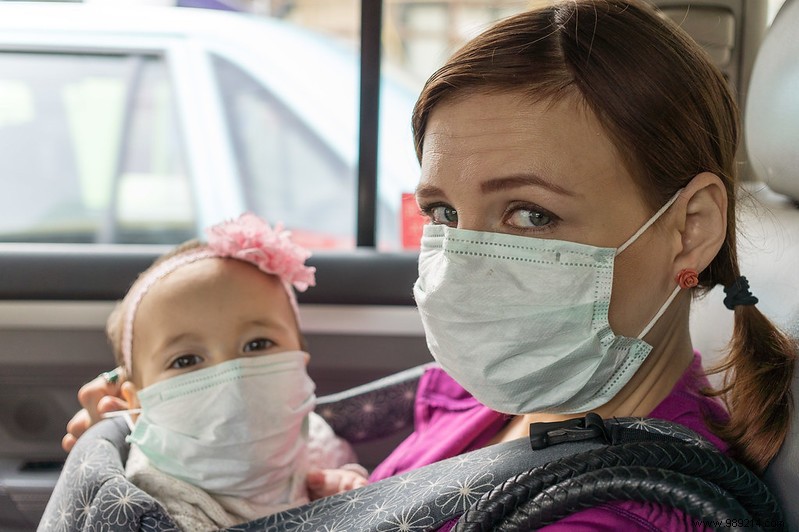No one is completely sure yet, but the simple act of breathing could help spread the Covid-19 coronavirus. The question is still debated but the United States is about to encourage citizens to wear the mask in public places.
Early on, the world understood that Covid-19 was spread via "big" droplets (sputter) projected by coughs and other sneezes . However, new research described in an April 2, 2020 Science magazine article is more concerning. This time it is about contamination through microscopic droplets. About a thousand times smaller than postilions , these droplets are obviously invisible to the naked eye. On the other hand, none of the studies cited provides firm and definitive proof of this kind of spread.
The article quotes a letter from Harvey Fineberg, a member of the American National Academy of Sciences. The document was addressed to Kelvin Droegemeier, head of the Office of Science and Technology Policy at the White House. In other words, it may well be that very soon, the United States government forces citizens to wear the mask in public places. With a toll of more than 273,000 cases and around 7,000 deaths, this country is seeking to take further measures.

If this hypothesis were to enter the domain of Certainly, this would obviously change the situation. The compulsory safety distance between people is currently one or two meters depending on the country. Indeed, the large droplets do not travel much further, then fall under the effect of gravity. On the other hand, we recently quoted an MIT researcher who said that the smaller the droplets, the farther they could travel. In addition to their volume, the throwing speed also plays an important role. The person concerned had mentioned a distance of up to 8.2 meters!
An American study published in the New England Journal of Medicine on March 17, 2020 speaks of tiny droplets capable of floating in the air for several hours. However, a second study going in the same direction was quoted in Harvey Fineberg's letter. In a prepublication on the MedRxiv platform on March 26, 2020 (being validated), researchers from the University of Nebraska Medical Center (United States) report the ubiquitous presence of viral RNA in rooms allocated to patients positive for Covid-19. In the case of 75% of the surfaces tested the virus was present. This was also the case for air samples collected at more than two meters of patients . However, you should know that the researchers did not find any infectious elements. Indeed, the virus was visibly present in too low a quantity.
The letter also cited a recent study conducted this time in Wuhan (China). This referred to the protective equipment for caregivers, namely gowns and other charlottes. Once removed, these protections would help to "suspend" the virus in the air again . Again, this is a study in the process of validation. In the meantime, suspicions of aerosol contamination are growing. This could especially explain why the virus finally spreads so quickly.